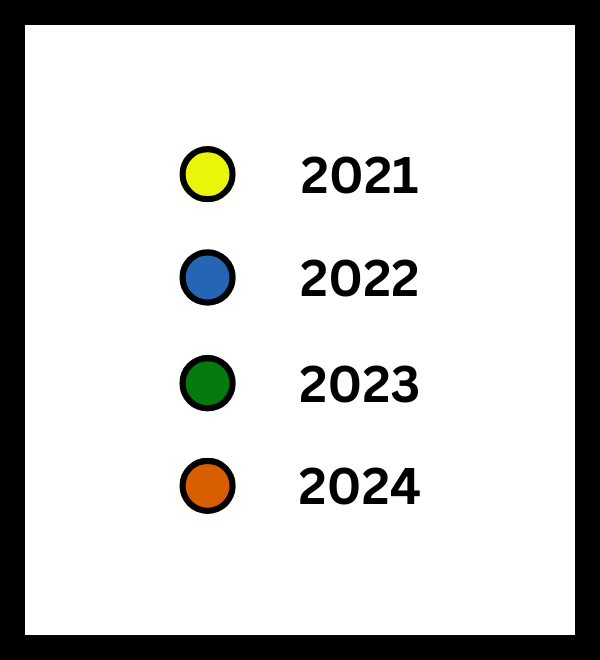Toyota Pollinator Friendly Places
Since September 2021, Pollinator Partnership (P2) has collaborated with Toyota Motor North America (TMNA) to help enhance, protect, and restore vital pollinator habitat across the United States, Mexico, and Canada. This habitat provides a home for pollinators such as bumble bees, honey bees, monarch butterflies, and a whole host of other species that together help sustain food production and ecosystem health throughout North America.
The goal of this partnership is to develop and enhance 26,000 acres of pollinator habitat by 2025. In the first two years of the project, our goal was to enhance a total of 5,500 acres. To date, we have helped enhance over 20,617 acres across Canada, the United States, and Mexico. Check out the map below to see where we are working to improve habitat and create a better future for pollinators.
Toyota's Blossoming Commitment: Nurturing Biodiversity through Bees and Butterflies
You can visit our Native Wildflower Seed Grant webpage to learn more about how you can get involved in this effort.

How are we doing this?
Over the course of this project, P2 has been building on existing partnerships and forming new ones in order to create, enhance, and conserve habitat for pollinators.
Who benefits?
For each project that we support with funding from Toyota, we choose native plant species that are well-adapted to the region they are being planted in. This has a number of benefits. These plants can better withstand challenging growing conditions, they require less water, and they typically have deep root systems that hold soil in place. Choosing native plants also has the benefit of providing a home to native pollinators, many of which have developed close associations with native plants. In some cases, a certain plant species or genus will be the only type of plant that is eaten by a species of insect.
These plants, known as host plants, are vital parts of pollinator habitat, and are featured in the species we distribute to plant awardees through our partnership with Toyota. Check out some of the host plants we’ve planted, and the pollinators they support, below.
Golden Alexanders (Zizia aurea) -Host plant for the black swallowtail butterfly
Smooth blue aster (Symphyotrichum laeve) - Host plant for many moth species
Milkweed species (Asclepias spp.) - Host plant for the monarch butterfly
Various goldenrod species (Solidago spp.) - Host plant for many moth species, as well as important late-season nectar source for pollinators, including migrating monarch butterflies
Black-eyed Susan (Rudbeckia hirta) - Host plant for silvery checkerspot, gorgone checkerspot, and bordered patch butterflies
Blue vervain (Verbena hastata) - Host plant for common buckeye butterfly
California poppy (Eschscholzia californica) - Host plant for Acmon blue, Mormon metalmark, and Pacific dotted blue butterfly
Elegant clarkia (Clarkia unguiculata) - Host plant for Clark’s sphinx moth
Baby blue eyes (Nemophila menziesii) - Important early-blooming species, and very attractive to mason bees
Globe gilia (Gilia capitata) - Highly attractive nectar source for native bees and butterflies
Various lupine species (Lupinus spp.) - Highly attractive to bumblebees, as well as other native bees
Purple coneflower (Echinacea purpurea) - Host plant for silvery checkerspot butterfly
Rattlesnake master (Eryngium yuccifolium) - Host plant for Eryngium stem-borer moth and flower feeding moth
Common sunflower (Helianthuis annuus) - Host plant for painted lady and silvery checkerspot butterflies
Oregon sunshine (Eriophyllum lanatum) - Host plant for painted lady butterfly
In our first year alone, we received reports of numerous imperiled species, including pollinators and other wildlife, being observed nesting in, foraging in, or otherwise using the sites that we have supported. Those species include monarch butterflies, eastern box turtles, rusty-patched bumble bees, Karner blue butterfly, American bumble bee, American woodcock, northern bobwhite quail, northern harrier, and sandhill crane.

This project is funded by Toyota Motors North America as part of their Toyota Environmental Challenge 2050.